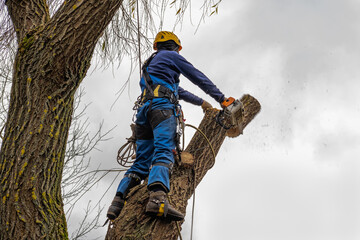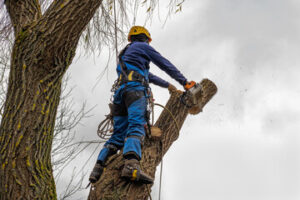Eccograss Landscaping is the art of creating pleasing outdoor spaces. It involves planting and installing structures like ponds, patios, walls and lighting to enhance beauty, utility and value.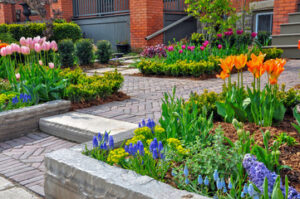
Plant native species that adapt to the climate and soil conditions. This reduces the need for chemical inputs and excessive watering.
Mulch is an excellent choice for reducing weeds and locking in moisture. Organic mulches include wood chips, shredded bark, leaves and grass clippings, straw or buckwheat hulls.
One of the most basic design principles is line. Lines can be horizontal, vertical, curved, or diagonal. They can be used to add structure and form, create contrast in the landscape, and frame a view. They are also important in property line landscaping because they outline where your home starts and stops, making it easy for people to see what is yours and what is not.
When planning your property lines, consider what kind of formal or informal look you want. Clustering plants together or repeating structural plants such as grasses can produce a more formal look, while a simple repetition of a plant species can create an informal look. The size of the plant material and the size of the home are important factors when determining how to use these design elements, as well as ensuring a balanced appearance.
While many different materials can be used in the creation of landscape lines, some of the most common are bedlines, hardscape lines, and path lines. Bedlines are created where a planting material meets another surface, such as turf or gravel. They delineate the edges of the planting area and connect the plant material to the house and hardscape areas.
Hardscape lines are created by the edge of a sidewalk, patio, deck, or driveway. They are often used to define the boundary of a landscape and separate the built features from the plant materials. Lines are often created by the contrasting colors and textures of the hardscape material.
Lastly, path lines are lines that create a path through the landscape and can be created by using various materials, such as gravel, mulch, or stones. The shape of the path can also influence the shape of the surrounding plant material and landscape elements.
Form
Landscaping is the art of changing the layout of outdoor areas to improve aesthetics and function. It ranges from simple plant arrangements to more complex projects, such as ponds and water features. Some landscapers focus on beauty, while others are more practical and work to provide erosion control, privacy, and even energy savings.
Form composition is the use of lines and arcs to create geometric shapes such as circles, squares, and triangles. This is important in landscaping because it creates a visual theme, according to “Residential Landscape Architecture: Design Process for the Private Residence.” The use of form composition helps to create unity and consistency in your landscape design. It also provides balance between the different elements of your yard.
Shape and form are two aspects of the design process that are often confused. Shape describes the two-dimensional characteristics of a plant, while form refers to its overall structure and growth pattern. For example, a tree’s general outline illustrates its shape, while its overall size and width show its form. Shape and form are important because they are enduring characteristics that remain beyond a single growing season.
Texture is another element of landscape design that should not be overlooked. It is the way a surface feels when touched, and it can create a dramatic effect. Using bold textures, such as rough or coarse, creates a rugged and formal look while a massing of fine texture appears softer and more casual. It is important to keep in mind that too much texture can be boring, so it’s essential to vary the types of textures used in your garden.
A well-designed landscape can add beauty and value to your home or business, as well as providing a pleasant environment for entertaining and relaxing. It can also help with soil erosion, reduce air pollution, and provide habitats for wildlife.
Color
Color is a powerful design element that draws the eye and alters mood. It can be used to create unity, highlight focal points, and add contrast to the landscape. While there is a lot of personal preference involved in specific colors, a landscape designer can use a few basic principles to help plan and execute the desired look.
The first is unity, which provides cohesion to the design by suggesting an agreement among the chosen elements. Using similar characteristics as the basis for a design—such as plants of the same size, color and type of leaf, or flowers with a comparable appearance—can help establish this principle. Focal points can also be used to emphasize a certain area of the landscape, and can be architectural, such as a fountain or sculpture, or natural, such as an unusual plant with a striking color or form.
A second concept is balance, which uses contrasting hues to draw the eye around the landscape. For example, pairing plants that lie next to each other on the color wheel—as in a yellow and blue garden—will enhance the beauty of each plant by bringing attention to its shape and texture. Similarly, a red flower in a white bed can make the landscape pop while still creating visual interest and harmony.
Finally, a landscape can be unified by using tertiary colors, which are the even blending of primary and secondary colors. For example, purples can be combined with pinks and whites to create a garden that is both calming and lively.
Texture
Landscaping involves designing the layout of outdoor spaces around homes, buildings, and other structures. It can include elements such as flowers, trees, shrubs, mulch, rock, and water features. The goal is to create a natural, aesthetic environment that complements the surrounding architecture and environment. It also adds value to the property and provides a place for recreation and relaxation. Landscaping can be done in a number of ways, from creating a formal garden with symmetrical plantings to installing hardscapes such as walkways and patios. The design should incorporate the principles of unity, transition, balance, and rhythm. It should also consider the amount of sunlight the area receives and how it changes throughout the day. Landscaping can be done both professionally and on a personal level.
Water
Landscape design incorporates water elements to add depth, movement, and aesthetic appeal. These elements, along with plants and other hardscape elements, form immersive environments that engage the senses and evoke emotional responses. Thoughtful integration of these elements, whether in lush gardens or contemporary living spaces, ensures that they enhance overall aesthetics and function.
Water features offer boundless possibilities for creativity in the landscape, from traditional options like ponds and streams to contemporary fountains and bubblers. Innovative options such as wall-mounted features and rain curtains further expand creative potential. Customization is essential in ensuring that the water feature blends seamlessly with the landscape and fulfills homeowners’ unique needs and desires, from creating a tranquil retreat to serving as a dynamic focal point.
The soothing sights and sounds of water lily pads and flowing waterfalls promote relaxation and instill calmness. The movement and sound of water also mask unwanted noises and create a peaceful ambiance for meditation, reflection, and outdoor dining. Studies show that exposure to water in the environment reduces cortisol levels, lowers heart rate and blood pressure, and alleviates depression symptoms.
Adding a pond, stream, or waterfall to your yard is a great way to enhance your property’s value and create a relaxing environment for you and your family. You will also be helping the wildlife around you by providing them with a place to live. Ponds, streams, and waterfalls provide habitats for fish, amphibians, dragonflies, migratory birds, and native aquatic plants. As a result, these landscape features foster biodiversity and ecological balance in the surrounding area. Homeowners are increasingly seeking homes with a range of lifestyle amenities, including water features. A well-designed landscape with a water feature demonstrates a sophisticated taste and increases the curb appeal of your home, making it more likely to sell.
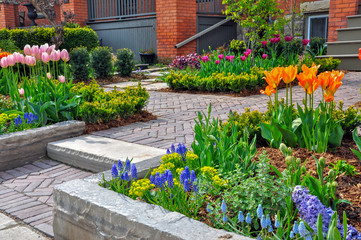
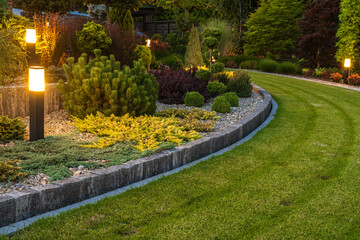
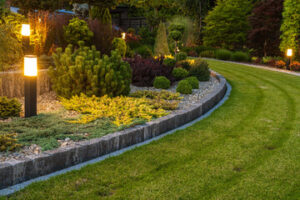 Landscape lighting is a complex art form that requires a combination of knowledge, an eye for design, and a deep understanding of how light interacts with your property. Whether you are highlighting an important tree, shrub, or flower bed, it’s important to balance the amount of light you use to keep your property inviting without overpowering it with too much brightness.
Landscape lighting is a complex art form that requires a combination of knowledge, an eye for design, and a deep understanding of how light interacts with your property. Whether you are highlighting an important tree, shrub, or flower bed, it’s important to balance the amount of light you use to keep your property inviting without overpowering it with too much brightness.